From building mountains to skyscrapers in Minecraft, to communicating with international colleagues, the metaverse is changing the fabric of the virtual world.
Technologists and digital experts shared insights and their own experiences of navigating and creating digital dimensions during the Synapse Summit event at Amalie Arena Thursday.
St. Pete Catalyst publisher and Metacity global digital experiences lead Joe Hamilton joined Jason Warnke, Accenture’s senior managing director and global digital experiences lead, and Kyle Morrand, CEO of 302 Interactive, to break down the emerging metaverse world.
Here are some highlights of the Metaverse: That’s so Meta panel the technologists and entrepreneurs presented:
The quotes have been edited for clarity.
On creating a metaverse campus: “We were piloting mixed-reality for the past several years, but it wasn’t until over the last year we found a relative use case that it prompted us to go buy 60,000 Oculus headsets for our people to start the journey into how we could create an omni-connected experience. The relative use case was, Accenture hires over 100,000 people a year. We would bring people to physical locations and understand what Accenture was all about and meet leaders – we couldn’t do that anymore nor do we think that will happen again. When we bring people to Accenture now, we bring them to One Accenture Park, our metaverse inside Accenture. As distributed as Accenture is, we never had one big campus. If we had this virtual campus, whether you are in Amsterdam or London, where you could interact with your colleagues. At the time, we were working closely with Microsoft and AltspaceVR to developed “The Nth Floor,” our virtual campus. Since six months ago, we had 44,000 people on board at Accenture through the One Accenture Park. The park for us creates this virtual space that you go into with a headset or computer.” – Warnke
On understanding how metaverse functions: “Metacity [a next-generation Web3 social operating system] is not immersive. So I’m coming at this from a different angle – a community angle. The metaverse allows you to rewrite a community and build it from scratch in a place anyone can opt-in. When it comes to understanding the foundations, the No. 1 foundation is consistency. The metaverse is always in a persistent state. It’s a world that when you go in and leave, it’s still there. Other people may have done things to it, Minecraft is a great example of that. Another element is portability, which is where NFTs (Non-Fungible Tokens) and blockchain come into play. Metaverses in the future will be the home of what people’s websites are now. It’s the logical next step for people to experience what you create for them. The current web2 will just seem old school like newspapers compared to this. But when you do that and interact, the same way you can wear your clothes and interact and go from one store to another, you will need a virtual equivalent of that. Metaverses will combine to build assets. It’s a negative user experience if you spend time in only one world. People who have that portability are the ones who will win [benefit the most from the metaverse].” – Hamilton
On the human interactions: “We found in terms of learning, the Accenture Park retention is much higher than normal forms of learning even more so than going to a physical training location. The retention is higher because of that shared experience. I experienced it myself. As you go through the world about the different aspects of different technologies and our company, it’s an incredible way to take away a learning moment. We are using it as a tool to practice how to deliver feedback to people and how to work with difficult clients. You can put yourself in a safe environment with an AI bot and practice how to give tough feedback to an employee.” – Warnke.
“I’ve been interested in the human experience and technology. Our relationship with technology is flat. We live in a spacial world with all of these dimensions and then we have this flat relationship with tech. The advantage of having this tech is building a more natural experience. It’s not about bringing dragons into the world or having whales popping out of the floor [he chuckled]. It’s about capturing that natural feeling of engaging with people. Four or five years ago, virtual reality was this big clunky headset and it’s still this big clunky headset, and technologists are trying to make that tech smaller and more accessible.” – Morrand
On building the public’s comfort level: “This morning, we hosted an event at Accenture Park and although several employees are familiar with the process, most of them are not. So leading up to this event, we had to provide the white-glove service by enabling the headsets, the right connectivity and navigation. It took a lot to get someone into a meeting. Just like any other technology, that process will get better. The tech is the easy part. Getting people to see the pieces of the puzzle coming together is the more critical component.” – Warnke
“For Metacity, I call it a grid overlay of a physical city. You can put art in a gallery and have a home space with that NFT gallery. It unlocks the value of the art. It establishes a status symbol and shows one’s support of that artist and/or their city. There’s a lot of capitalist and community motivation in having the NFT gallery.” – Hamilton
Additional takeaways: The panelists recommend that an interested metaverse user may want to start exploring platforms such as Minecraft and others to be able to absorb the experience as a learning launch point.
The post Accenture exec, technologists talk building a metaverse world appeared first on St Pete Catalyst.
